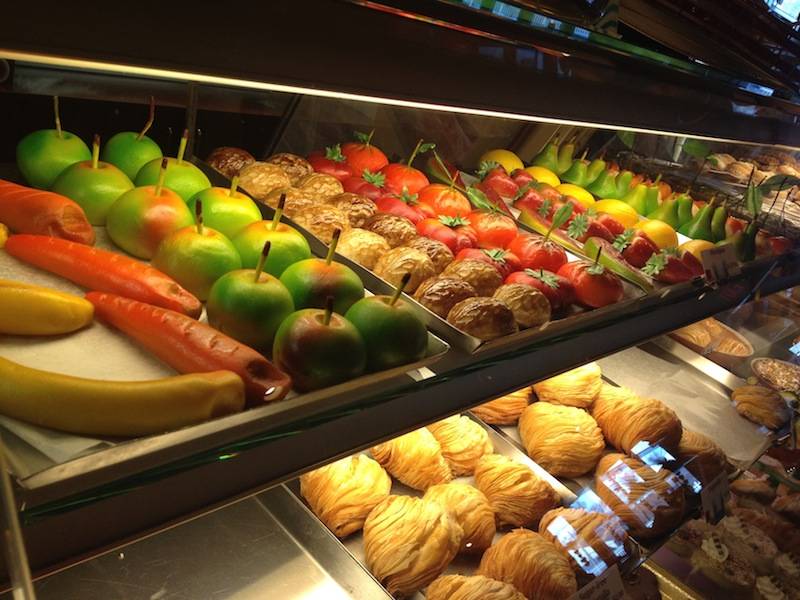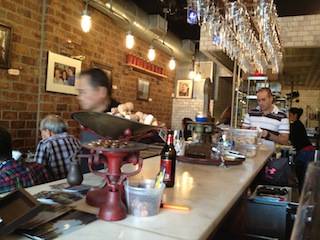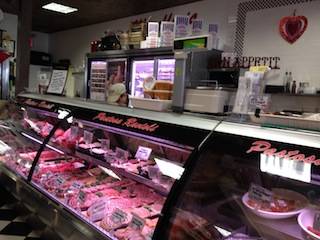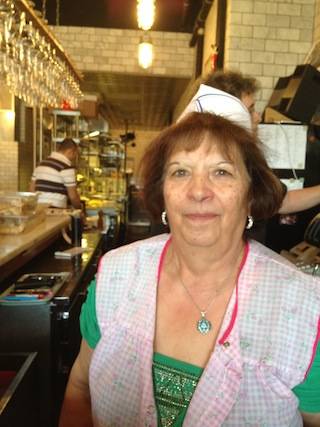How New York City’s Outer Borough Italians Cook and Eat
The verdict is in, and Italy has won the culinary battle against the French. At least that’s what it looks like to a visitor to New York when it comes to cooking. Luxurious Italian restaurants like Del Posto and Marea draw the critical accolades and big crowds, and New York’s newest tourist must-see destination is Eataly, a huge food spectacle in the fashionable Flatiron district.
Part upscale food store, part restaurant, and completely jammed most days, Eataly (related to the original shop in Torino) sums up all the contradictions of Italian food in the United States: Is it “authentic?” Do you need Italian ingredients for a dish to be “Italian?” Is Italian-American cuisine a cuisine apart? (Eataly is not without its charms, though; Italians with Unicredit checking accounts can pilfer their accounts without a fee by using the bancomat machine. And by the Unicredit kiosk, a digital screen managed by i-Italy broadcasts information about Italian events in the city 24/7).
“Maybe we’ll see Mario Batali,” I overheard one tourist-visitor on a recent visit, referring to one of the celebrity co-owners of the store. And for many visitors to the place, that’s enough.
Ever since cookbook author Marcella Hazan burst onto the scene in the 1970s, Italian food in the U.S. has split into low and high culture. The highbrows scoffed at the old immigrant “red sauce” cooking. Their food was first called “Northern Italian” in the U.S.—supposedly refined, with cream sauces and delicate flavors—none of that garlicky spaghetti and meatballs. Soon, the Manhattan type of Italian restaurant took on a rarified air, embraced by foodies, who gushed about authenticity, regional cucina, and truffle-hunting in Piemonte. In the process, they turned Italian food into another consumer fetish, divorced from its native context.
Meanwhile, in New York’s outer boroughs, Italian immigrants and their descendants went about their business, shopping for food and cooking it like they always had. Is it “authentic,” meaning prepared exactly how it’s done in Italy today? Probably not. But Italian cucina in Italy evolves, too, as any living culture does. And even there, more travel back and forth meant that more foodstuffs, like genuine parmigiano-reggiano, and Arborio rice, showed up in the salumerie and markets of Brooklyn and the Bronx.
So let’s take a look at what the real Italian diaspora is doing, in terms of food shopping, restaurants, and home cooking. We’ll start with Staten Island, of all places. Why? Staten Island, or Richmond County, is the most Italian county in the U.S., with some 37 percent of its roughly 500,000 souls claiming some Italian blood. With its rolling hills and gentle, easy way of life compared to “the City,” as many Islander call Manhattan, it’s comfortable with its way with food, mostly unaffected by the culinary snobbism that afflicts Manhattan.
We start with Basilio Inn, Staten Island’s oldest restaurant. It’s in a nineteenth-century house near South Beach, which was once one of the biggest summer resorts in the city. City dwellers, many of them immigrants like my maternal grandparents, would escape the Lower East Side and other crowded inner city neighborhoods for the sea air of Staten Island’s south shore.
Places like Basilio’s (as it’s popularly known) catered to them. It’s changed hands over the years (the owner, Basilio Giovannino from Piemonte opened it in 1921), and its proprietor is Maurice (Maurizio) Asperti, who came to the U.S. from Campania as a boy. Basilio’s is probably the closest you can get to an Italian country osteria, with a laid-back feel and a reasonably priced wine list. The cooking is rustic Italian, too—seafood pastas, zucchine with mint, various veal dishes, whole broiled branzino. There’s a bocce court in the yard (the restaurant hosts tournaments), and in the summer, the restaurant’s garden supplies much of the produce.
Speaking of Campania, the city’s newspapers regularly run surveys of the best pizzerias in the city, and a Staten Island favorite invariably makes the list: Joe and Pat’s. An unassuming place, Joe and Pat’s famous pie features a thin, cracker-like crust; it’s Italian minimalism at its best. Started by immigrant Giuseppe Pappalardo in 1960, the pizzeria has become an island institution. Joe and Pat’s has given back to the city, too—their son Angelo “A.J.” is the proprietor of the success Rubirosa, near the acclaimed Torrisi Italian Specialties on Mulberry Street in Manhattan’s Little Italy, where you’ll find the same kind of cracker-crust pizza.
But Staten Island doesn’t only do old-fashioned. A short walk up the hill from the ferry terminal you can find the 5-year-old Enoteca Maria, a comfortable, new-age Italian.
Eschewing the rustic old-country look typical of many Italian-American establishments, the look is industrial chic, with bare brick and factory lighting. Owner Jody Scaravella hit upon a terrific gimmick: Have a serious wine list, and hire nonnas to do the cooking. A cast of some seven grandmas take turns at the stove each night it’s open (Tuesday through Saturday; you can check the web site for that night’s menu). The food is classic cucina casalinga: spaghetti with mussels and beans, rabbit stew, roast pork with rosemary potatoes.
Staten Island is not all about restaurants. The island can boast thousands of good home cooks, who can turn out perfect arancini and shrimp oreganate. They have to shop somewhere, besides the huge supermarkets that have made a big stand on Staten Island, like everywhere else. One Eataly in miniature is Pastosa Ravioli on Forest Avenue. It’s part of a family group of stores, identically named, but varying in what they carry, depending on the neighborhood.
The Pastosa closest to my home carries a huge variety of imported cheeses, mostly Italian (Tuscan truffle pecorino!), fish, meats and prepared foods. Those with more esoteric tastes (for Italian-Americans) will be happy with the stocks of farro, Umbrian legumes, roasted olives and pastas. It’s in a mixed (not primarily Italian) neighborhood, so the food on offer has a slight international cast to it. More roots-oriented is another Pastosa in Dongan Hills, where half the packaged food doesn’t even carry labels translated into English.
Have a sweet tooth? Pasticcerie dot the island, and one of the newcomers is among the best. Pasticceria Bruno, with its marble counters, dark wood and sleek lighting, looks at though it’s been airlifted from Palermo, and besides the usual biscotti and torte, there’s a gelato stand in front. We can now get our nocciola fix whenever we feel the urge.
All of this is just a sampling of what’s out there in the city’s least-populous borough. But Italian-oriented food is woven into the fabric of everyday like there, for around one-third of the population, and it’s not just a fad. We’ll next check out Brooklyn, the borough across the bridge, which has its own mixture of nuova cucina and immigrant-roots cooking.





































Comments
Well done. I look forward to
eat in Italy
Reading about such a